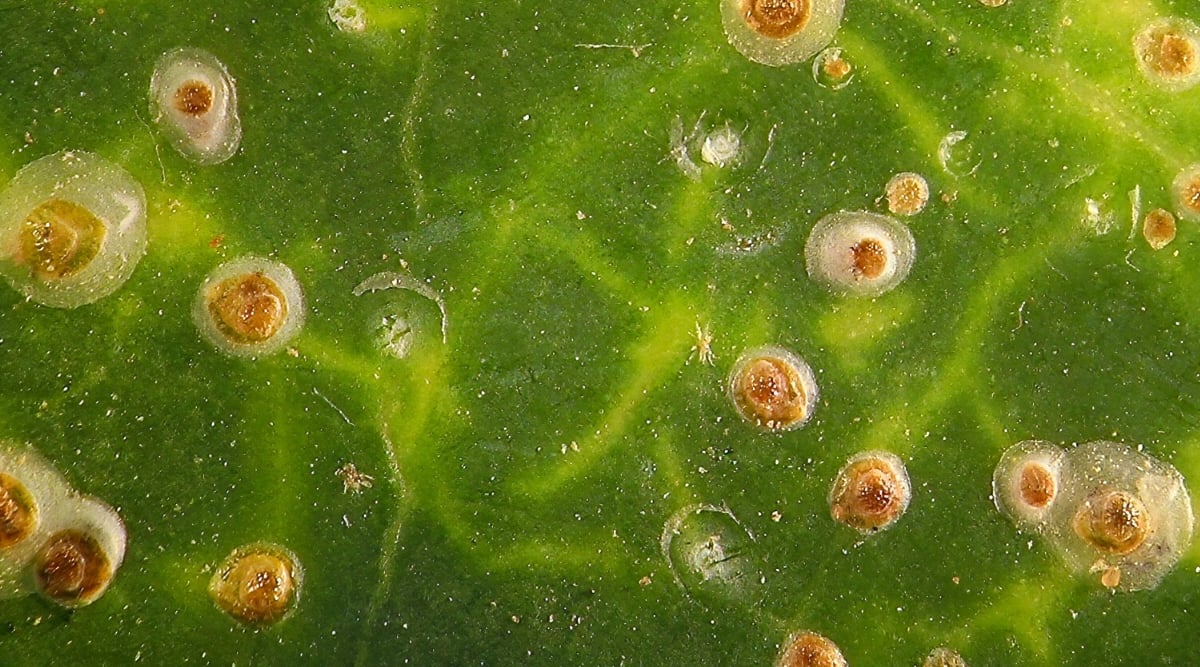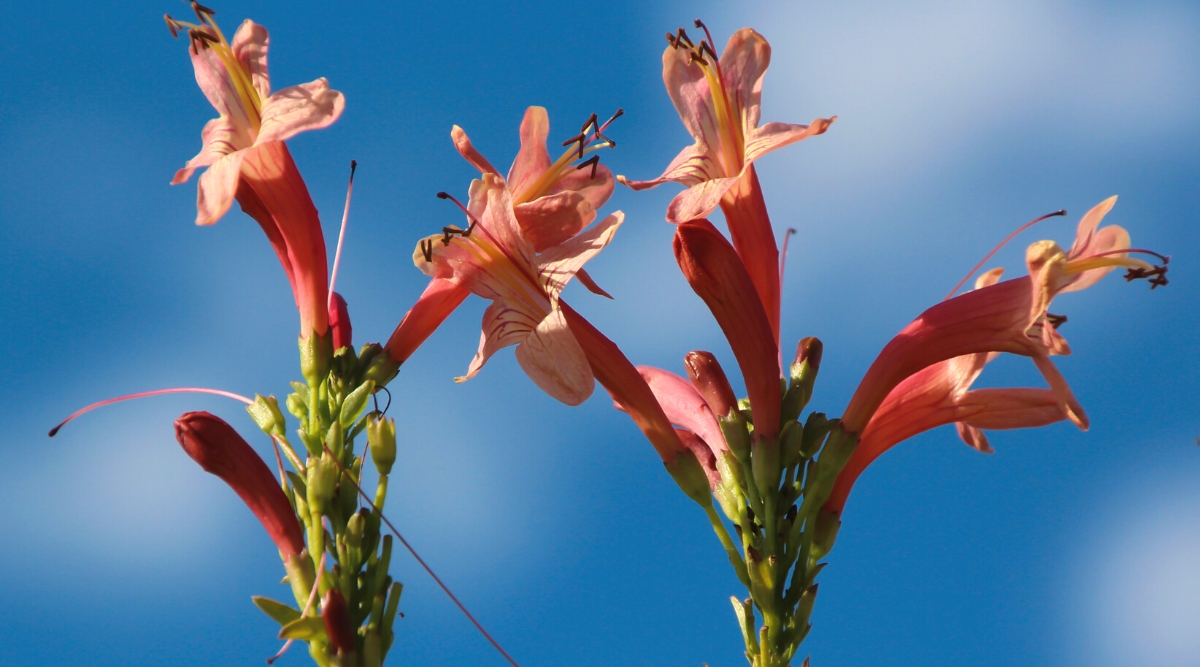vine
Are you looking for a fast - growing , prolific flowering plant that can be grown as both a shrub and a vine ? Cape Honeysuckle fit all of these qualification and is very easy to handle for . In this article , gardening expert Melissa Strauss share everything you need to know about embed and care for Cape Honeysuckle .
substance

Cape Honeysuckle , orTecoma capensis , is an evergreen vine or shrub aboriginal to Southern Africa . Do n’t allow its name slang you , though , Cape Honeysuckle is not actually a character ofhoneysuckleor even a near relative . Rather , it is a member of the Tecoma genus , typically known as Trumpetvines , or Trumpetbushes .
These attractive unfolding plant can be grown as a bush , growing to about 10 feet magniloquent for heavy cultivars and 6 - 8 foot in more compact sort . They can be coach to have a vining drug abuse as well , so they can be grow as a track vine or a liana ( hanging from tree ) and can get hold of up to 30 ’ long if produce in this style .
In its aboriginal region , the barque of this flora has been used to make medicine . However , now it is most commonly grown for its ornamental value . It is a hardy , down - care , and sprawling plant life that is very prosperous to grow and brings a lot of color and interest to the garden .

quick to determine more about this lovely vine ’s sustainment and care ? Let ’s dig in and look at everything you need to know about successfully growing this industrial plant in your garden .
Cape Honeysuckle Overview
Native Regions and Cultivation
In its native realm of Southern Africa , T. capensisis typically found growing in the forest understory beneath a canopy . It commonly wind its style up Tree , where it wish to drag from branches in the filtered sunlight .
In cultivation , it is a various works resistant to pests and disease . It has been cultivated in Australia , India , Europe , Singapore , and some island environment in the Pacific Ocean . It is believe invasive in Australia , though .
This mintage is not difficult to observe in the Southern United States . It grow very well in tropical and subtropical climates and can be grown as a repeated or with some trade protection from frost in zone 8 . It can also be grown as a container plant in colder mood , although it will be much smaller under these circumstances .

Classification
Cape Honeysuckle is an evergreen bush or vine belong to to the Bigoniaceae family of preponderantly flowering vine known for their cornet - shaped flower . Most phallus of Bigoniaceae are woody , includingT. capensis , making the vines tough and sturdy , give them good wind resistor .
They are of the genus Tecoma , also known as Tecomaria , which comprehend 14 metal money . Of those , 12 coinage are native to the Americas , and two , includingT. capensis , are native to Africa . Related to this plant are the Jacaranda and Esperanza , as well as the Yellow Elder , or Yellow Bells . All of these plant are notoriously attractive to pollinator , especiallyhummingbirds .
Leaf Formation
Cape Honeysuckle has very attractive foliage . The foliage are pinnately compound , mean they are made up of small leaflets arranged to either side of a central stem or axis vertebra . They come in odd Book of Numbers of 5 – 9 leaflets .
The leave-taking are up to 7 ” long , and the leaflet are ovate and serrate and typically come in pairs with the odd - number leaflet occurring at the end of the branch . The leave of absence resembleroseleaves , and some varieties are nicknamed to pay homage to this gadget characteristic .
The bright gullible color of the foliage submit a wonderful complement to the color of the flowers . The overall effect of the leafage is rather dense but with a delicate , fernlike quality that sees them rustle with the zephyr . It make a great privacy screenland when grown on a treillage or other supporting structure .
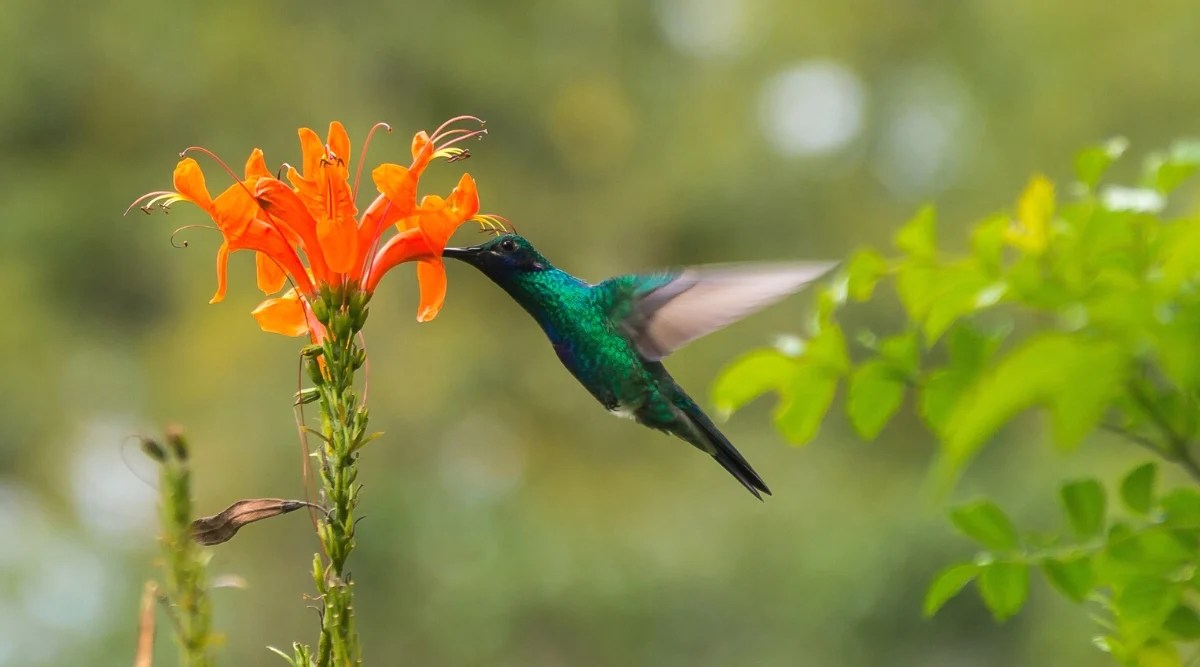
Flowers
The flowers are the primary event for this industrial plant . If the leaf is adorable , then the flower are positively sensational . Trumpet - like blossoms of red , orange , or yellow efflorescence in clusters at the ends of leg . When it blossom , it does so with great enthusiasm , create these clustering at the last of most , if not all , branches .
The flowers are tubular in conformation and about 2 ” long . These blossom are very attractive to razzing , butterflies , and bee , and in particular , hummingbirds . Thebest thing about Cape Honeysuckle is that it can bloom year - round in lovesome climate . Even in cooler climate , it will have a nice longsighted bloom season . Many varieties have a late flower tendency , blossom from fall through the wintertime when fewer industrial plant are in bloom .
Propagation
Cape Honeysuckle plants are easy to propagate and much does it for you if you are willing to wait a year . This squeamish , easy - to - manage industrial plant really dresses up the garden with colour for a farseeing portion of the twelvemonth . It ’s a smashing plant to share with your fellow plant lovers , and it can be disperse by ejaculate , cuttings , and runners that it produces on its own .
Seed
When the flowers are pollinated , which they nearly always are , they raise a cum cod . Allow these fuel pod to dry , and then harvest the seed . It ’s good to set about these seeds in the leaping , imbue them overnight , and then plant them in a shallowseed starting tray . Cover light with a admixture of sand and potting filth .
sprouting should occur within 6 - 21 days . Once they have develop substantial roots , they can be planted in the ground . The only drawback to growing this plant from cum is that it wo n’t bloom until its second year . Be certain to protect young plant life in the winter . They will be much more vulnerable to fluctuate temperatures in their first class .
Runners
This is theeasiest wayto diffuse Cape Honeysuckle . All you have to do is look for the plant to institutionalise out a runner , which they do about a class after planting , once the plant is established and has a solid foundation of roots . A runner will usually pop up a unretentive distance from the mature stem , and it will be an exact replica of the parent plant .
These ball carrier can be remove from the parent plant and transfer to another location in the garden . ensure to do this type of propagation during the plant ’s active growing season . expend a sharp instrument to come away the runner from its parent plant , leaving it with a chip of etymon to get embark on on .
Cuttings
Cape Honeysuckle can be propagate by cuttings as well , and it is about as simple as develop them from cum , but it will get you a plantready to bloom in the first yearif the cutting is taken from a mature plant .
Take 4”-5 ” cutting and remove all but a few pocket-size leaf toward the death . Scrape the lower 1 ” of the stem , removing some of the woody outer layers . Exposing the raw tissue of the stem attain the cutting origin faster . Dip this end in rooting internal secretion and works in a moist potting mass medium .
care for your cuttingsis simpleton . you may hatch the pot in a moldable bag or other coating to help asseverate moisture , make a greenhouse environment . Do n’t provide the grunge to dry out out completely . Your cutting should be rooted and get to acquire in about 2 - 3 month .

How to Grow
turn this industrial plant is closely unfailing . It maturate as a perennial in my garden here in Zone 8 . I give it very little attention and it dies back to the ground every winter , but in outpouring it pops back up , and by the end of summertime , I have a very attractive and floriferous works !
Although most nurseries will betray this as only dauntless to Zone 9 , it grow nicely in Zone 8 , and with a thicklayer of mulchand some supernumerary protection , I am willing to calculate it would survive in Zone 7 as well . It is incredibly resilient .
Planting
It is best to found Cape Honeysuckle in the outpouring or fall to give it the dependable start . The stressful heat energy of summer should be obviate , as the plant will need more resource during this time to get established .
Keep in mind the ripe size of this plant when choosing a positioning , making certain to give your industrial plant plenty of elbow room to circulate out . Think about the height of the plant as well and determine whether you plan to train it to be a shrub or a vine .
As a vine , Cape Honeysuckle can grow up to 30 ’ long . This is a significant plant and need copious support!Ensure that any structure you plan to grow this vine on is unattackable enough to oblige up under its weight . It is a woody vine and heavy than an actualJapanese meeting house .
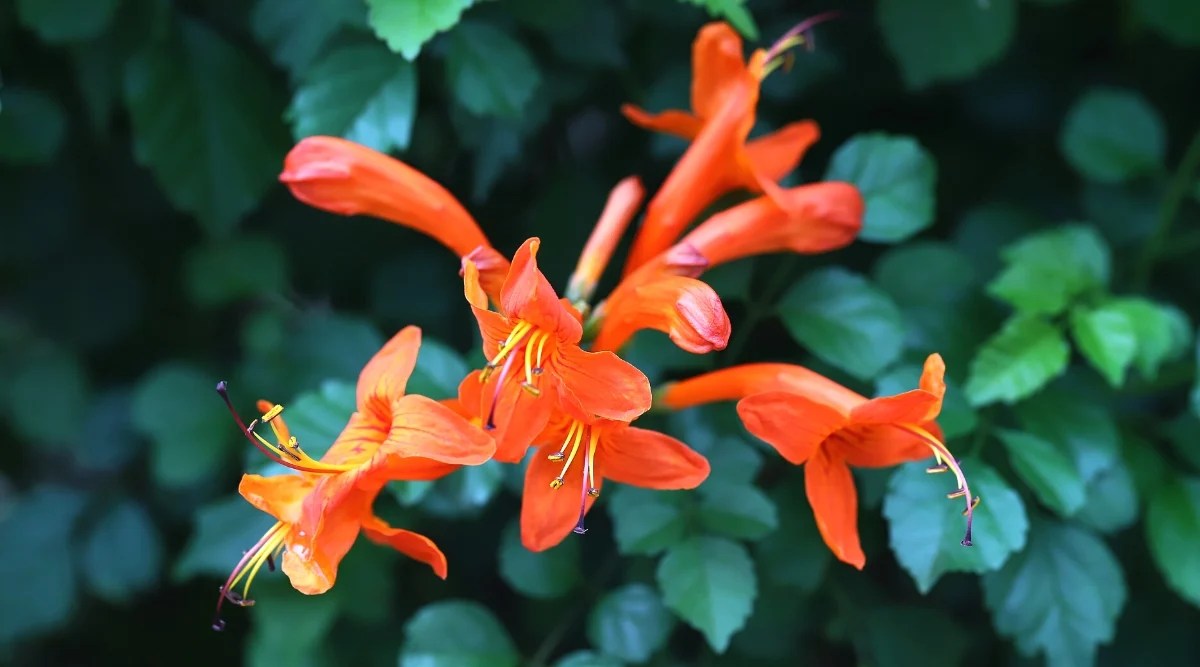
Once you ’ve chosen a positioning , dig a hole that is as deep and 3 time as across-the-board as the source clump . relax up the dirt in this diam will give the roots a healthy beginning . Position your plant in the hole and backfill .
If you live above zona 8 , it is perfectly fair to grow this works in a container that can be brought indoors when the temperature throw away below freeze . The works will remain smaller and more manageable when kept in a container .
Light
This tropic flowering vine is not picky about sunlight exposure . It will bloom in full sun or part nuance . In hotter climates , though , it will appreciate some wraith in the afternoon to protect it from the severity of the good afternoon sun . In cooler climates , likewise , this plant will take account an abundance of sunshine during the cooler months .
Water
This is a water - loving plant ; if given plenty , it will reward you with ample growth . However , it is also adrought - kind plant . That seems contradictory , but keep reading , and I will explain .
During the first class after planting , ensure that your shrub or vine gets at least an inch of water weekly . You may be able-bodied to water less ofttimes if your flora commence more specter , but as a rule , watering deeply once per hebdomad is a good musical theme . Watering deeply will boost the root to uprise thick .
Once your plant is plant , it should n’t want nearly as much attention . A Cape Honeysuckle with unattackable , healthy roots is quite drouth - liberal and hardy . An established works may only need water now and again during prolonged periods of ironical weather condition .

Soil
Cape Honeysuckle tolerates most dirt eccentric as long as the drainage is right . If planting in very compacted or clay - lowering land type , it ’s a good idea to amend the soil with some coarse Amandine Aurore Lucie Dupin for amend drainage and antecedent establishment . It is not picky about pH and can live in acidic or alkaline dirt . It also get well in coastal field where the soil is sandy . It is salt kind as well .
Fertilizer
If your soil is lack in nutrient , you may feed Cape Honeysuckle once a twelvemonth with a balanced fertilizer . However , it might be easily tosimply amend your soil with some organic compost or other material , such asworm casting , before you engraft . In world-wide , this plant is efficient in get exercise of nutrients in the soil and is a very vigorous agriculturalist , so fertilizing is not always necessitate .
Climate and Temperature
Cape Honeysuckle is atropical landscape plantthat loves lovesome , showery climates . As such , it canbecome invasivein this surroundings , sogardeners living in tropical climate will need to keep a close picket and hit runners regularlyto keep it from make over larger areas that you want to give it .
Pruning
How you prune your Cape Honeysuckle will largely bet on what conformation and sizing you want it to take on . As I mentioned earlier , this industrial plant is very versatile in how big and in what form you may grow it .
If you are develop it as a bush , more pruning will be involved , as it will incline toward vining . Initially , pruning longer stems will advance ramify . As the industrial plant grow , this will give it a denser , good appearance , and encourage it to spread out .
Once you have chance on the desired number of branch , trimming the top periodically will help to keep the foliage full and lush . It is best to prune in natural spring or declination .
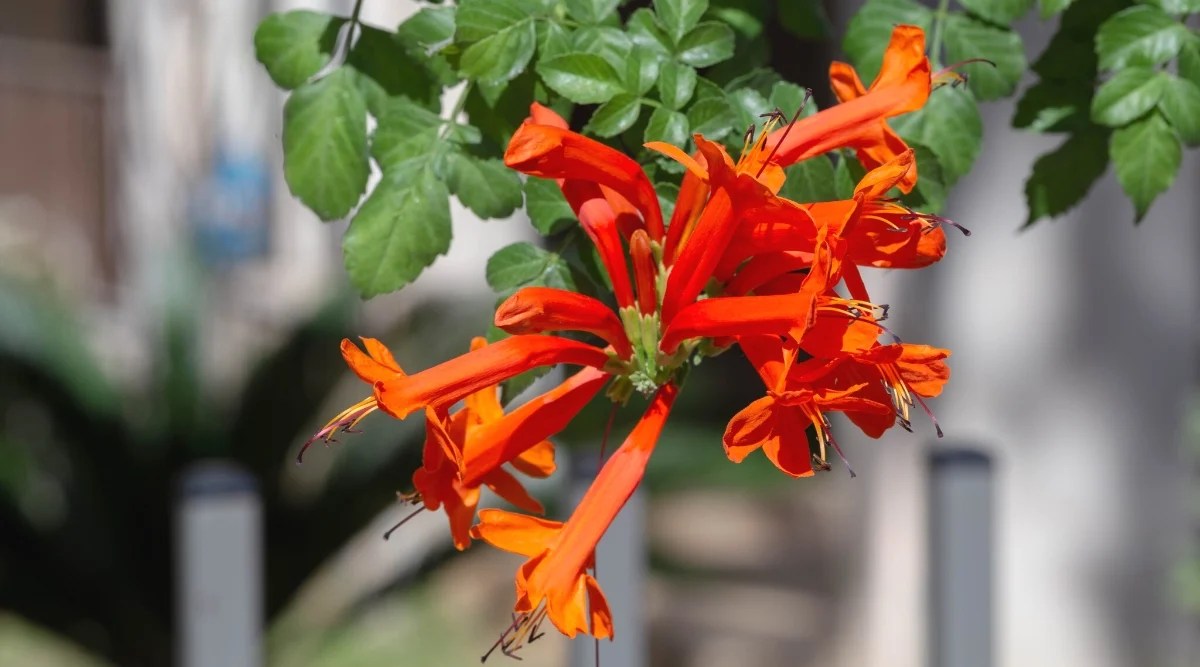
If you want a climb plant that takes on more of a vining habit , you could leave your flora to its own equipment for a few years , pruning piddling else but discredited or dead branches from time to time to maintain the works ’s universal health .
Once your industrial plant has reached the size you would like it to remain , you canprune yearly , in outflow or tumble , or both , if you have a specific size of it or shape you would wish to maintain .
Maintenance
Cape Honeysuckle is a very dispirited - maintenance flora . It truly can plow as picayune or as much tending as you are fain or have the time to carry out . Once it is established , this plant happily concern its space and any additional space you want to give it . Itrequires piddling in the room of supplementary irrigation or fertilization , and it is quite disease and pest repellent .
Pests and Diseases
With very few exceptions , Cape Honeysuckle is unbelievable to give you any issues in terms of pest and diseases . In fact , aside from root rot , there are no diseases that are a particular danger to these plants , and only the workaday garden pests to keep an heart out for .
Aphids
If you notice shrivel up leaves and brown spots , you may be looking at an insect infestation . Aphidsare enemy act one in the garden , as they feed on a all-encompassing variety of different types of plants . These tiny dirt ball appear in bunch , typically on newer growth , such as tender branch or flower buds .
aphid go down on the sap from the plant tissue paper , leaving it malnourished and insalubrious . They also give behind a sticky , sweet-scented excretion hollo honeydew melon . This honeydew provides the everlasting environment for grim sooty mold to grow , which intervene with photosynthesis , and stunts the flora ’s growing .
A meek solvent of soapy water sprayed on the aphids will go a foresightful way in safely treating this plague . They also dislike aromatic herbaceous plant and are a master food origin for ladybug . Attracting or contribute these little vulture to your garden will do good for all of your plants .

Scale
Scalesare another usual garden pest that wish to feed on sweetened plant life blackjack , leave behind shriveled leaves , browned spots , and honeydew . They are small and brown and commonly hang out in groups around the articulatio of stems and the bottom of leaves .
scurf can be treated with a horticultural oil spray . The oil coating and suffocates the scurf by clogging their external respiration pores . wasp also care to exhaust musical scale , as do some beetles and lacewings .
Root Rot
ascendent rot is an issuance with many plant life , especially those that need good drain in terms of grunge and containers . Cape Honeysuckle falls into this category . While they are not as susceptible to beginning bunkum as some other tropical plant life , it is not unheard of .
If you note your leaves turn brown or looking spotty , there is a fortune your plant may have base bunk . The best answer is to give the plant a break from lacrimation . Root hogwash prevent the plant from transporting important nutrients from the soil to the foliage . This can manifest in an unhappy - look plant .
If you accidentally institute in an area with poor drain , you may rectify the situation in one of two way . you could relocate the plant , which Cape Honeysuckle is quite tolerant of . The other choice is to remediate the soil around your plant ’s base by ruffle uncouth sand to increase drainage .

Popular Varieties
‘Apricot’
‘ Apricot ’ is a compendious variety . This plant with the pretty , peachy flowers has clean dark-green foliage and is typically keep as a small hedge . Unlike larger variety , this one iseasier to manage in terms of invasiveness .
It is , however , rarefied and more difficult to come up than other varieties . Apricot blooms best during nerveless weather and prefers full sun but will still bloom in part nuance .
‘Aurea’
This big variety can grow quite bombastic if allow for unchecked . If you ’re looking for a vining cultivar , this one ’s branches will rise quite long . At the ends of these long , sprawling branch emergelarge clusters of hopeful yellowish , tubelike flowers . This riotous raiser blooms best in wintertime and likes to go up .
‘Coccinea’
Coccinea is a midsized mixed bag with a moderate increment rate , making it easygoing to carry off . It can grow up to 12 ’ tall over time and as as wide if not crop on a regular basis to maintain its size and shape .
The flower on this cultivar are hopeful reddish , and most prevailing in bounce and fall , although they have been known to bloom through the summer as well .
‘Orange Jubilee’
Technically a hybrid , this variety is a vigorous agriculturist with slightly better insensate tolerance than other varieties . It will grow under just about any circumstances and is an exceptional bloomer , with a long season spanning from fountain through the fall .
Its brilliant flowers are orange and red , tubular , and striking against shiny unripened foliage . hummingbird will flock to this plant !
‘Salmon’
Also known as ‘ Hammer ’s Rose , ’ the ‘ Salmon ’ variety is plainly rattling . It iscold tolerant to 23 ° , have it normally evergreen to zone 8 , although it may lose leaves when the temperature drops below freezing .
The bloom are a bright salmon shade and blossom most in spill and winter , although they are likely to bond around throughout the year in lovesome climates . This cultivar is more difficult to find oneself and more compact than others .
Final Thoughts
Whether you want to spring up it as a large shrub , trailing vine , or indoor plant , this tropical flower is a dazzling addition to any garden . It involve very little caution and attract beautiful hummingbird . Just be indisputable to see if it is invasive in your orbit before embed outside .








